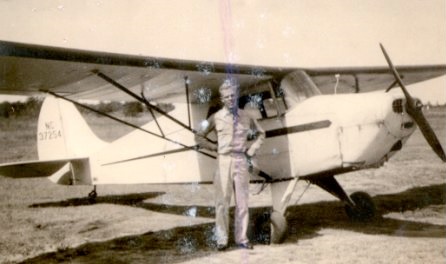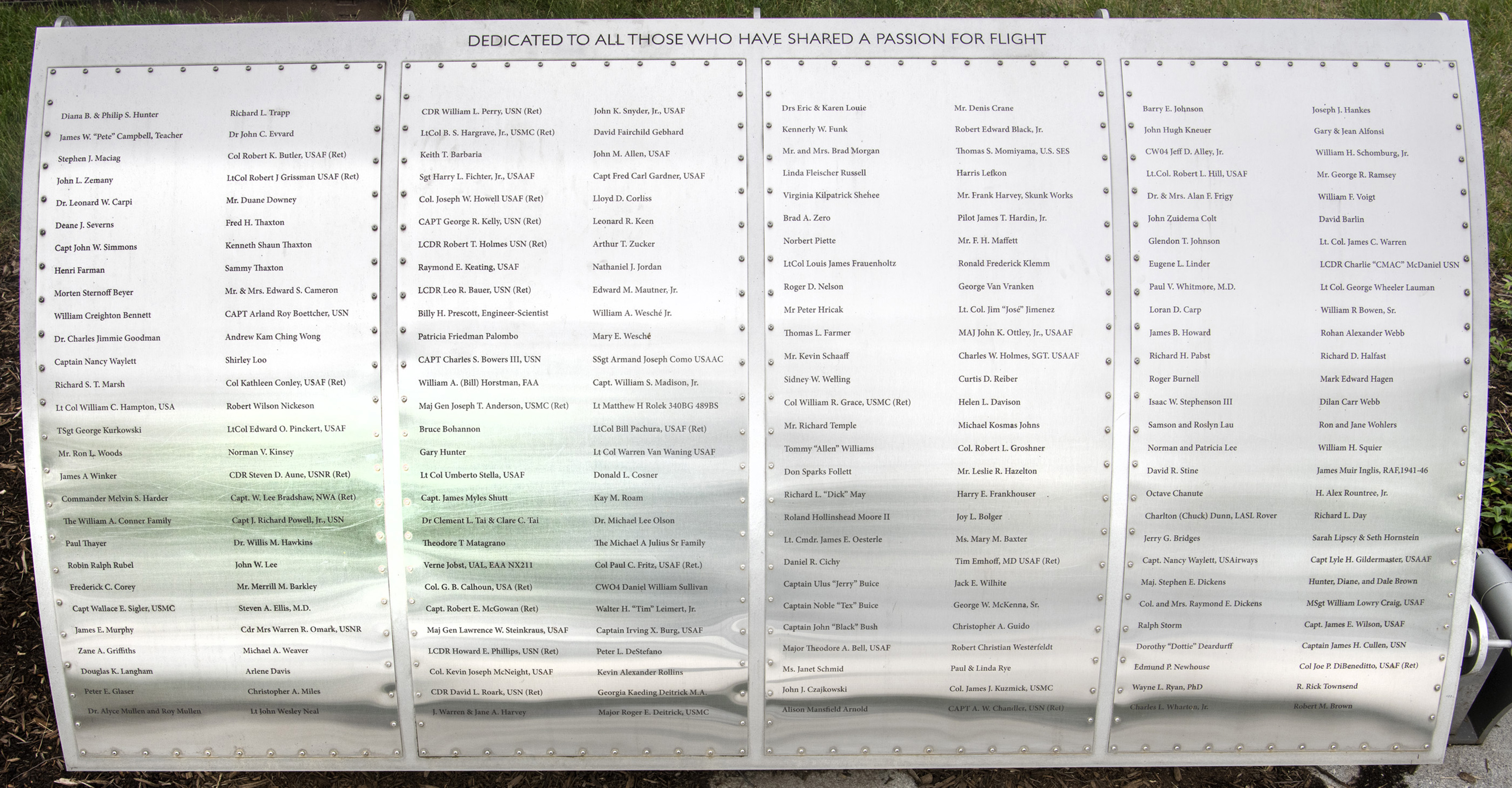
Foil: 22 Panel: 2 Column: 2 Line: 2
Wall of Honor Level: Air and Space Sponsor
Honored by:
Mr. David F. Gebhard Jr.
David Fairchild Gebhard was born November 16, 1925, in Mt. Vernon, NY, the son of John G. Gebhard, and Helen Louise Fairchild. As a boy David excelled in designing and building model airplanes. After his freshman year at Princeton University he entered the Army Air Corps Cadet program. The development of drop tanks greatly reduced combat losses, and the pilot training program was put on hold. David however, started learning to fly at his own expense, earning his Private Pilot’s certificate before his discharge in 1945. He returned to Princeton, receiving his Masters degree in aerodynamics. After a brief period at Grumman he joined the Gyrodyne Company of America and then the Kellet Aircraft Company. At Gyrodyne he patented a unique directional control system which solved a fundamental coaxial rotor control problem. He also identified the unique high speed, high g potential for a coaxial rotor when coupled with auxiliary propulsion.
David rejoined Grumman in the Preliminary Design Department in 1958. When NASA awarded Grumman the Lunar Excursion Module contract, he identified the appropriate techniques and test issues for the landing phase. This led to development of the LEM Certification Test Program, which identified all the technology issues requiring resolution in order to launch with confidence. David managed this program. Every LEM performed its mission, and particularly so during the flight of Apollo 13 in 1970, when the LEM served as a lifeboat for the crew of the stricken Lunar Module. David’s signature is among those of other Grumman engineers inscribed on a plaque that remains on the lunar surface.
After the Apollo program, David returned to aircraft design, and was awarded the 1986 Inventor of the Year, for developing a device (jump strut) that would greatly reduce takeoff roll. The nose strut was fired so as to achieve rotation before normal takeoff speed is reached, and the main struts were then fired. The altitude gained allowed continued rotation beyond the tail strike angel. A nose strut suitable for installation on a T-38 was fabricated and tested in a drop tower in 1984, and in 1985 the early rotation capability and appropriate technique were confirmed in tests on a T-38 at the Naval Air Test Center-Patuxent River, Md. Follow-on jump takeoff simulations showed a 45% reduction in takeoff roll.
David also shares a number of patents on both helicopter and airplane design. Significantly, 38 other patents cite David’s original patents.
Until recently David was flying a Cessna-172 and Cherokee in Westerly, RI.
Wall of Honor profiles are provided by the honoree or the donor who added their name to the Wall of Honor. The Museum cannot validate all facts contained in the profiles.
Foil: 22
